Best Bunding
Floor bunding, bunded pallets, drip and storage trays. Compare the options. Best place for Tradies to buy bunding for their clients.
Bunding Solutions and Spill Containment
How and why is it essential for your business, workplace and environment? Today, we will help you understand how bunding works, the types of bunding, and everything else you need to know to keep your workplace safe.
GET TO KNOW BUNDING A LITTLE BETTER
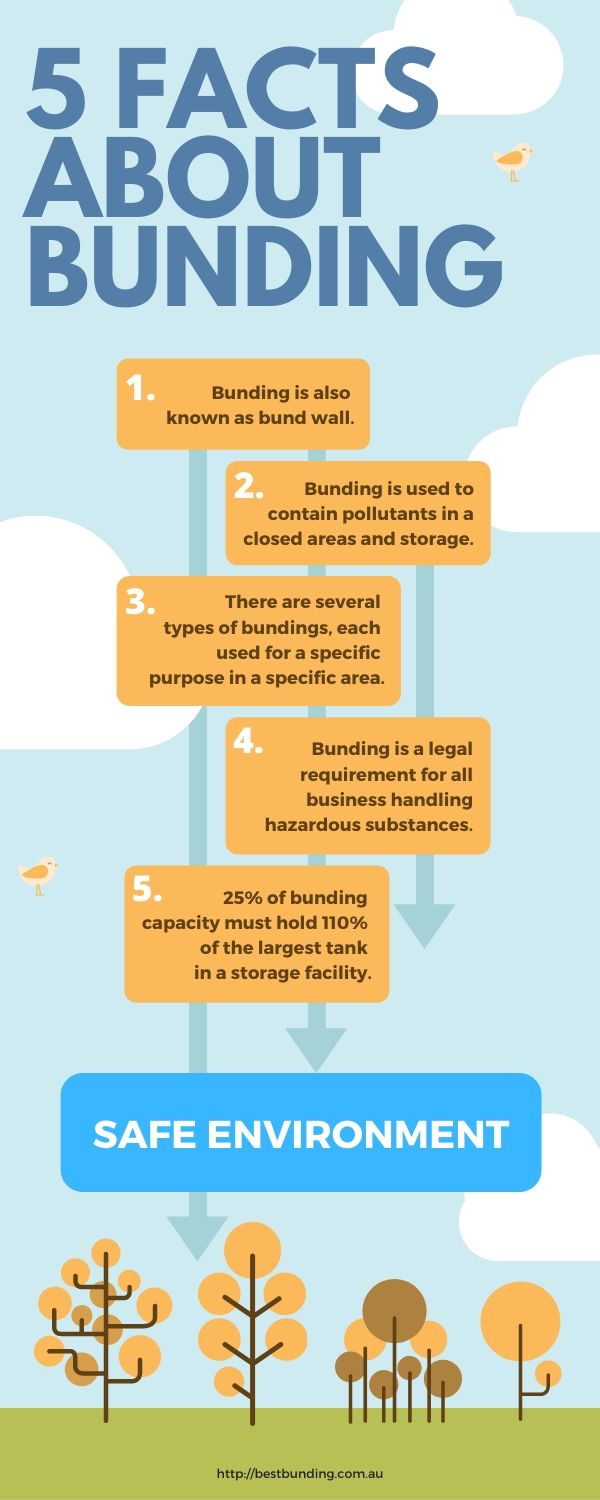
Bunding isn’t just something you should consider if your business is dealing with hazardous substances. Rather, it’s something you must install as soon as possible. In Australia, like many other parts of the world, the use of bunding is regulated by law, making it compulsory for liquid containment.
WHAT IS BUNDING?
Bunding is also known as a bund wall, and it is used inside facilities that handle toxic substances or hazardous chemicals. Liquid containment is the primary purpose of bunding, ensuring accidental spillage of dangerous materials is contained in one area and prevented from reaching the environment and until remedial action is taken. It is important to add that there are different types of bunds, and each we use for a specific purpose.

Example Tribund flexible floor bunding.
TYPES OF BUNDING
You have probably seen countless bunds in your lifetime, but until now, you didn’t recognise the importance of the structures. They can be found in storage facilities, warehouses and almost any area where dangerous substances are held and processed.
Bunding can be manufactured utilising various materials – but the materials need to be suitable to contain harsh and aggressive chemicals. Whether it’s a composite material, metal or even rubber, you always make sure you see some form of laboratory testing or compliance certification.
There are three main types of bunding when dealing with hazardous substances.
- Bunded pallets (bunded trays)
- Floor bunding
- Collapsible Bunds (portable bunding)
1. Bunded pallets (bunded trays)
A bunded pallet is the most common type of bunds. It is a container that comes with a grate-made lid, which can easily be removed for cleaning or chemical removal. The tank containing the chemicals will be placed on the top of the lid and in the case of a spill, the liquid will be contained inside the container. It is a very efficient and useful system that has been used in many businesses and facilities for years to protect the environment and workplace safety.
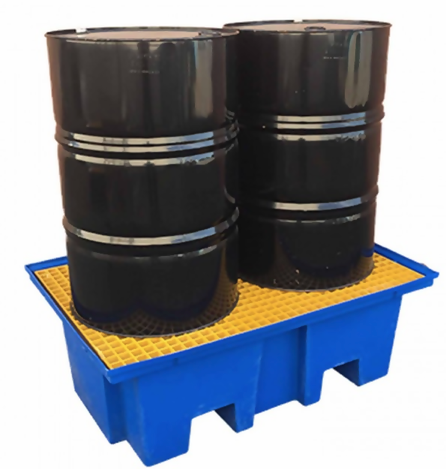
Example of 2-drum bunded pallet bund.
Most bunded pallets are made from durable plastic, metal, and composite materials. Some feature 4 drums, while others are 2 drum capacity as well as a pallet for an IBC (Intermediate Bulk Container). They are all portable and easily moved and can also be known as bunded trays.
2. Floor Bunding (floor bunds)
Floor bunds come in different shapes, sizes or materials. Today, we describe the 4 most common floor bunds.
2.1 Flexible floor bunding (Rubber / PVC)
Flexible floor bunds are made for facilities where bunding is exposed to heavy foot and vehicle traffic. They are very durable and have contoured edges built strong enough to maintain their shape for years, even with high vehicle traffic. The size can vary depending on the business needs; however, the length is generally around 5 metres.
The installation (Quick video guide) is simple, and the whole process only takes a few minutes. Flexible rubber and PVC bunds are sometimes sold together as an installation kit with adhesive/sealant, paint marker and caulking tool for convenience.
2.2 Tribund flexible bunds (Foam / PVC)
Tribund is made from heavy-duty PVC and inner memory foam. It is a flexible and cost-effective solution to bunding in light traffic areas. The advantage of inner memory foam is that the bund returns to its original shape almost immediately after being driven over.
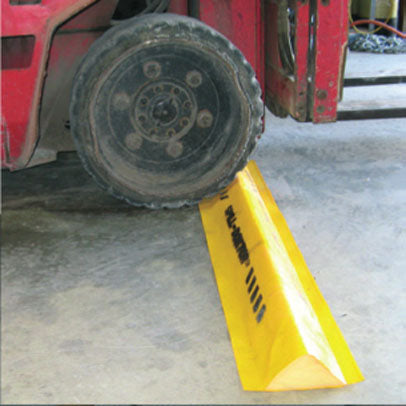
Example of Tribund flexible bund.
A standard Tribund flexible bund section comes in dimensions of 2 metres long, 110 mm wide and 50 mm high. To create your desired bund shape, join a few Tribunds together with a PVC 90-degree joiner. To join Tri-bunds together, we require PVC adhesive as well as Polyurethane floor adhesive(we need a product link) to seal them to the floor. The installation and maintenance are straight forward.
2.3 Rigid floor bunds (Galvanized steel/powder-coated steel)
A combination of two rigid bunds used in conjunction, Standard rigid type floor bunding and Drive over rigid type floor bunding is a very cost-effective solution for businesses. Rigid floor bund is perfect for creating instant and permanent bunds in an extensive scale application, around diesel oil tanks, chemical storage areas and washdown bays.
As all the floor bunds, to install Rigid floor bunds is easy. In many cases, you can purchase them as an installation kit together with Polyurethane Adhesive and Nylon Anchors.
2.4 Aluminium bunds (marine grade 6005T65 extruded aluminium)
Australia's toughest, most versatile drive-over Aluminum Floor Bund used in industrial areas with high traffic of heavy-duty machinery. It is suitable for Class 3 flammable storage areas, front gates and warehouse access points.
It’s a unique product amongst other floor bunds. Ideal for flammable liquid containment in accordance with safety legislation AS 1940-2004.
The 33mm height aluminium bund can carry 100 tonnes and provides good bunding capacity while the profile maximises clearance and allows easy vehicle passage, making it less difficult for the driver.
3. Collapsible Bunds (Portable bunding)
Portable bunding is designed for use over a short period and can easily be moved to another location if required. The units are made from heavy-duty PVC and are very common in mining and gas-handling areas.
Essentially, portable bunding is designed to be used in a single bunded area as long as needed and then moved to another area.
You need to be careful when applying portable bunding to the floor to ensure it still has a strong seal in place so that chemicals will still be contained.
AREAS OF USE
Bunds are designed for liquid containment. If your business handles chemicals and substances that are toxic to the environment, then EPA compliance states bunds are mandatory.
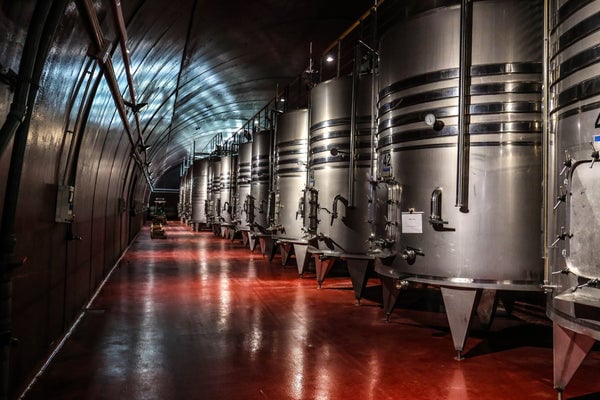
The following industries are the most common users of bunding:
- Hazardous material handling
- Oil and petrol
- Construction
- Chemical industry
- Facilities making substances
- Car industry
- Waste disposal
- Chemical transport
- Electrical industry
HOW TO CALCULATE HOW MUCH BUNDING YOU REQUIRE?
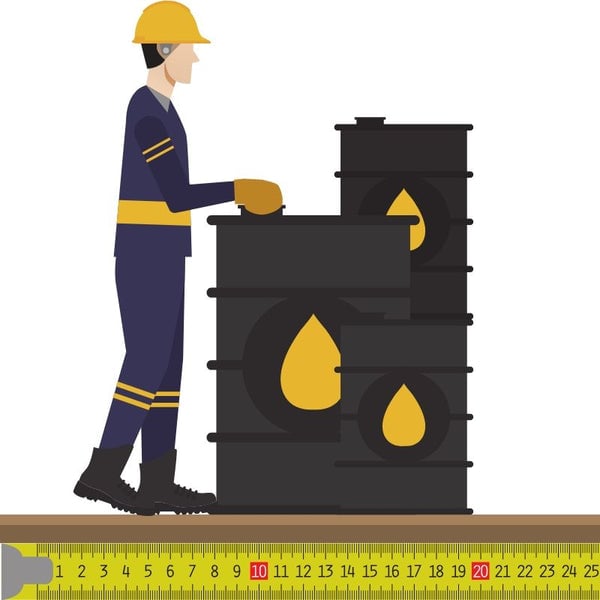
The general principle is that a bund must contain 110% of the largest tank or reservoir containing chemicals or 25% of the whole liquid amount. The height of the bunding must be sufficient to keep the spillage that might occur at any given moment. It means that if more tanks with higher capacities are stored, bunding must withstand their maximum possible spillage.
LAWS AFFECTING BUNDS
In Australia, AS 1940:2004 (Storage and Handling of Flammable and Combustible Liquids) is used for regulating the usage of bunding, storage trays and bunded pallets. The other standard is AS 3780:2008 (Storage and Handling of Corrosive Substances). Both standards state that bunding on the floors and walls must be made from a material resistant to the chemicals stored inside the facility.
BUND TESTING: NEW AND ALREADY INSTALLED
New bunds are generally tested using a hydrostatic test. An area of the bunding is filled with water, left for a specific period and then the water is drained. The result is checked, and water must not pass bunding.
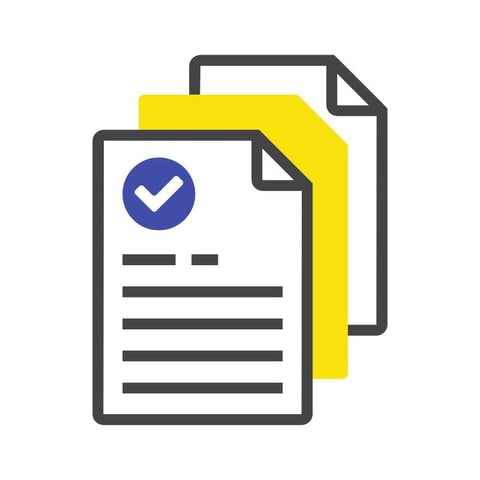
The same test is used for installed bunds which are generally tested every two years. Visual inspection is also encouraged. The EPA will check bunds for any cracks or damages that can cause leaks.
THE FINAL WORD
Bunding is mandatory by the law, and it must be used by all businesses and facilities handling hazardous chemicals and liquids that could have a negative effect on the environment. Business owners not complying with bunding regulations can be issued severe penalties. Pick the type of bunds you need and get your business and the local environment safe.
To ensure you are complying with Australian law and keeping your workplace and environment safe, speak to your trusted bunding experts at Best Bunding today.
Contact us today and find out how we can get your workplace bunded safely and securely.